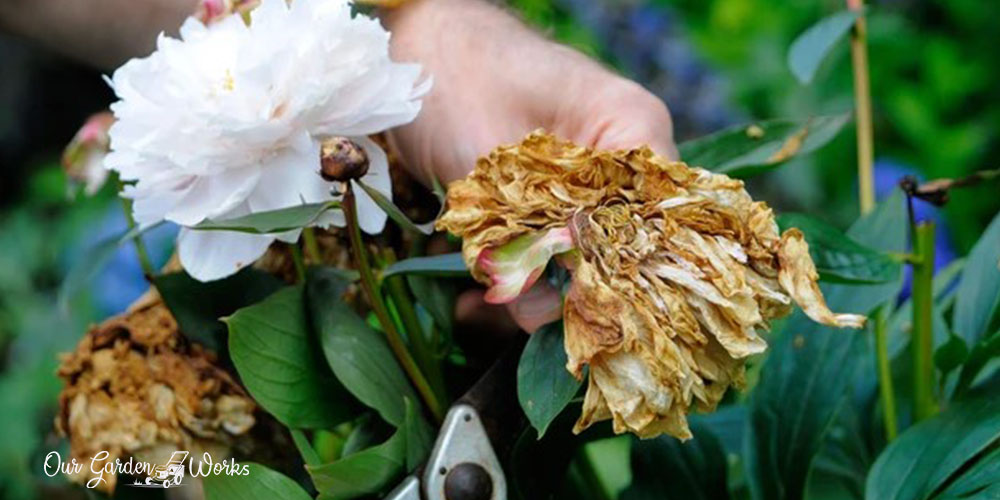Should you deadhead peonies or not is a question that most novice gardeners have to deal with. Peonies are among the stars of the spring season that can be hard to get rid of after they show off their big and colorful blooms.
Many gardeners are hesitant in deadheading since it is not a common practice in some regions. However, it’s more healthy than you think.
Peony and tree peonies are among the nine flowers listed by the BBC Gardeners World Magazine that require deadheading.
Deadheading flowers is a process of cutting dried and spent flowers for various benefits to the plant. Most flowering plants put some of their energy to get rid of and clean their spent leaves and flowers.
In this post, we will share all the things that you need to know about deadheading peonies and how they can help them thrive.
Though some gardeners prefer to let the natural course have its way of cleaning old and spent parts of plants, it doesn’t hurt to try and see what happens.
Who knows you might discover something worthwhile in the process, right?
(You could use the table of contents below to jump to the sections that are most important to you.)
Q: Can You Deadhead Peonies and Tree Peonies Without Harming Them?
Deadheading is a common practice that has been around for years. Even professional gardeners and landscape artists use it to boost the performance of most flowering plants.
Instead of harming peonies and tree peonies, cutting off their dead and spent parts is an energy-saving technique for them.
So, it’s like removing a task from their to-do list and easing their burden in keeping their blooms and seeds coming.
What Happens If You Don’t Deadhead Peonies?
It may look harmless to let the flowers die and dry on their own. However, there are endless possibilities that can happen when you leave the spent flowers of peonies and tree peonies on their stems. These include:
More Energy Will Continue Developing The Seed Pods
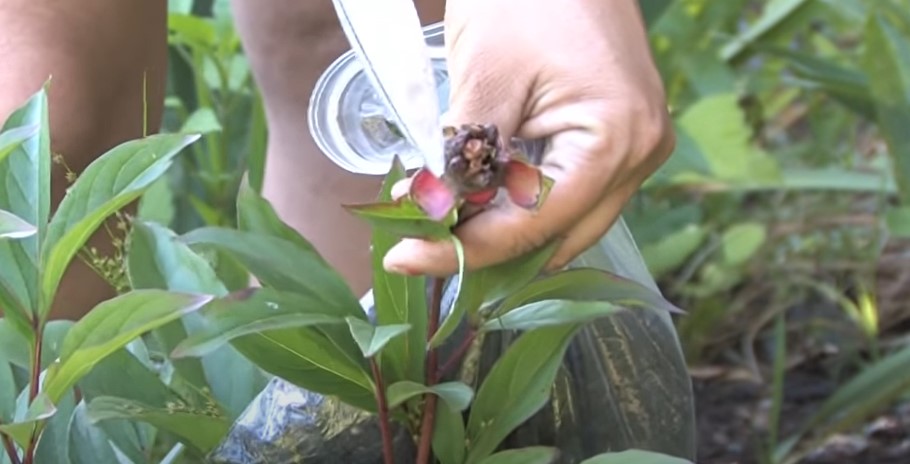
Peonies develop after they bloom. Once the flower has started to dry out and the color fade, the plant is already gearing up in cleaning out the old petals and developing the seed pods.
The seeds will develop until the seed pods become brown and leathery. They become ready to harvest when the seeds pop out with black and purple color.
When the whole plant starts to die down during the fall, the pods will be buried in the soil and grow back in the next spring.
If you have no plans of growing seeds, deadheading the spent flowers can halt the peony from transitioning all its energy and resources to seed production. However, if you want to propagate new peonies next spring, you may leave the old flowers untouched.
Note: The varieties directly grown from the seeds will not clone the cultivar that you have. It would also take several years for peonies grown from seeds to develop blooms.
There Will Be Fewer and Short-Lived Blooms
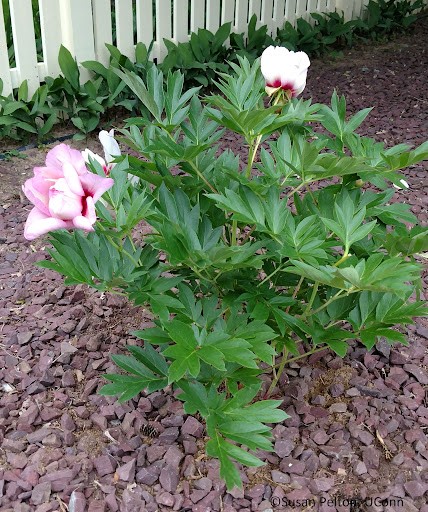
Since the old flower is still intact and the energy of the plant is all spent on the blooms and seed production, there is no room for new growth and bloom boost.
Deadheading helps hack the process and redirect the energy of the blooms to extend their bloom season and even encourages the development of new blooms.
Higher Risk For Fungal Diseases
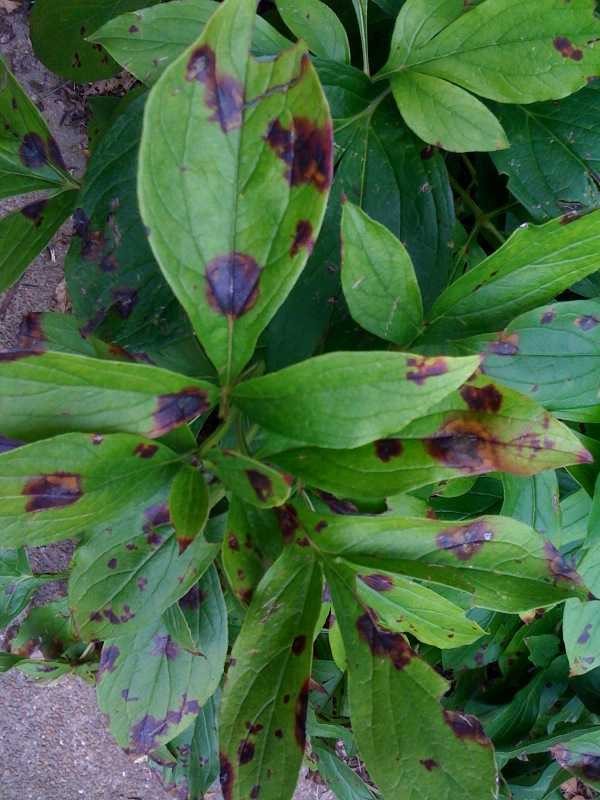
Molds and spores of fungal diseases are attracted to rotting and wet piles of dry leaves and flowers.
During a rainy season, the spent peony flowers can become the home of botrytis blight or gray mold and other fungal diseases. When the disease spreads throughout the plant, your peonies may fail to develop new blooms, and young shoots, or worse, die.
Removing old leaves, stalks, and flowers also serves as a preventive measure against fungal diseases. Sick peonies are hard to look at, especially when they used to have so many blooms during spring.
Deadhead and trim them down during fall to keep them healthy and see them bloom again next spring.
Stems May Bear The Heavy Lifting of The Spent Peonies
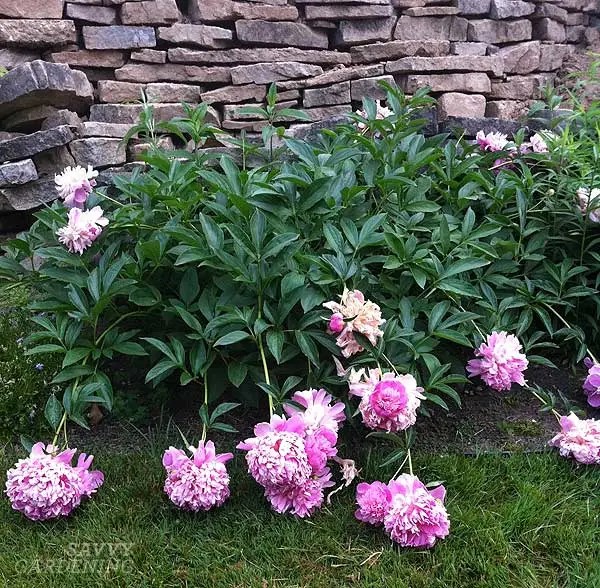
Leaving faded peony flowers on the stem can cause the plant to fall over due to its weight.
Peonies are known for their big blooms and distinct floral scent. Though the stems can stand tall during dry days, a few rain showers can still knock them over.
To prevent the unsightly look on your peonies, it’s best to deadhead the spent flowers and put peony support around the new blooms.
The Whole Plant May Look Shabby
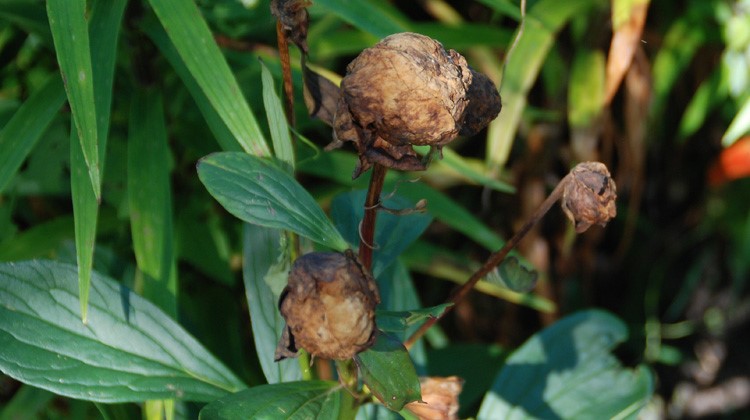
As happy as we are to see the beautiful and big blooms of peonies can be as sad as seeing them die and dry out on the plant.
Dead leaves and flowers hanging on stems may look like your peonies need a bit of care. A few cuts, trim, and deadheading can do the trick in making your plants look posh again.
Besides, getting rid of the old flowers and leaves can be a refreshing activity for most gardeners. There’s something therapeutic about getting rid of the old to welcome the new growth.
The Peonies Won’t Get An Extra Health Boost
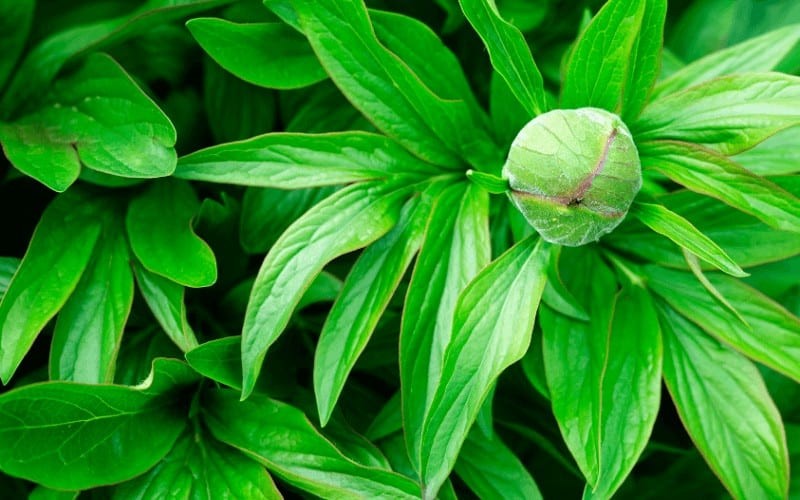
Unlike us humans, peonies don’t have the hands to remove their dead or spent parts. It takes so much energy for them to get rid of the old blooms which rob off the energy for other essential plant processes.
Once you deadhead the spent flowers, peonies will divert the energy for their health upkeep and keep the remaining blooms longer than they should.
If you want to extend the blooms of your peonies and let their aroma stay in your garden, add deadheading into your gardening routine. It’s a type of plant care technique that your peonies will thank you for.
Do Peonies Rebloom After Deadheading?
Unlike other perennials, peonies do not regrow a new bloom after the old ones were cut.
Instead, the energy of the plant is redirected to the other parts of the plant and extends the bloom season of other existing flowers.
Always remember that deadheading peonies are not to push the plant to grow new blooms but to preserve its energy, prevent diseases, and keep it looking posh and healthy.
Why Do We Need To Trim Down Peonies Before Winter?
If you are new to growing peonies, you might have heard about cutting them down to the ground before the winter comes.
On a thought, we decided to include this topic since it’s also a preventive practice like deadheading that you need to do as a peony parent.
Herbaceous peonies, tree peonies, and Itoh peonies are the three types of peonies. Herbaceous peony varieties grow circular blooms and reach 2 feet in their full maturity. They die in the ground as soon as the cold season starts.
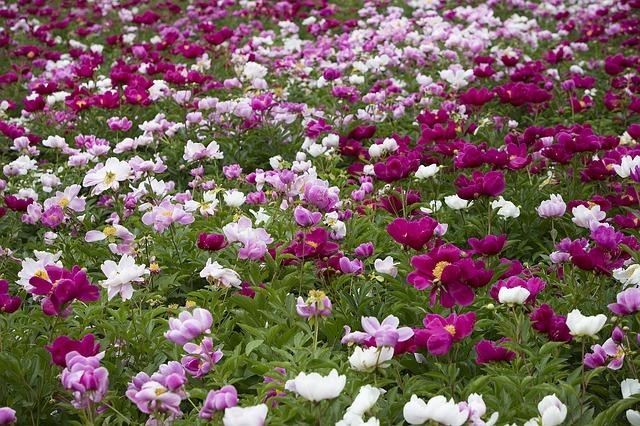
Tree peonies are peony varieties that have woody stems and grow big blooms that can reach up to 10 inches in diameter.

Lastly, Itoh peonies are the hybrid of the first two varieties. They have big blooms from the tree peonies and the soft-stem structure and behavior of herbaceous peonies. They die back in the ground as soon as winter hits.
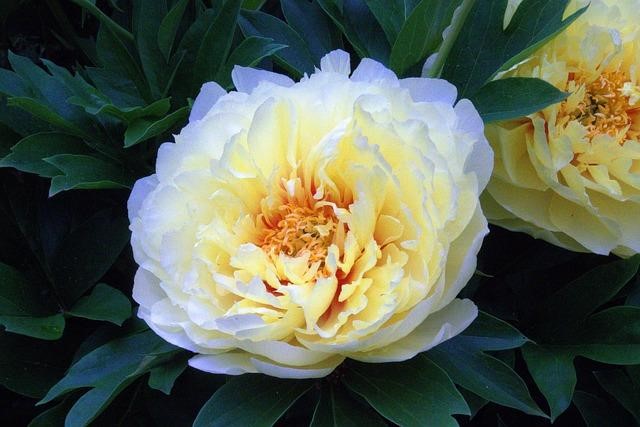
The growing behavior of tree peonies no longer requires cutting down because they only need a few trims to be spring-ready.
Herbaceous peonies are the ones that need to be cut down to the ground before winter to prevent fungal diseases for the next growing season. As soon as the leaves start to yellow or brown, you may start to cut them.
How To Deadhead Herbaceous Peonies?
Deadheading herbaceous peonies are fast and easy. It may be hard to see the blooms go but it will help them keep growing healthy every spring. Here’s how:
Materials:
- Sanitized pruning shears
- Small container for collecting the flowers
- Dish soap solution in a bucket
Directions:

- Look for faded or dried flowers. Using your pruning shears, cut them on top of the first set of leaves below the flowers.
- Dip your pruning shears in the dish soap solution to prevent any transfer of spores or bacteria to other stems.
- Also, look for dead leaves and stems that you need to remove for a cleaner and nice bush of peony.
- Collect all the dried flowers so you can repurpose or use them for compost.
When fall comes, you need to cut the whole bush down to help the plant store its energy and be ready for the next spring. It will grow back healthy and with more blooms.
How To Deadhead Tree Peonies?
Tree peonies have woody stems that are tougher to cut. However, the deadheading process for them is almost the same with herbaceous peonies. Here’s how:
Materials:
- Materials :
- Sanitized pruning shears
- Small container for collecting the flowers
- Dish soap solution in a bucket
Directions:
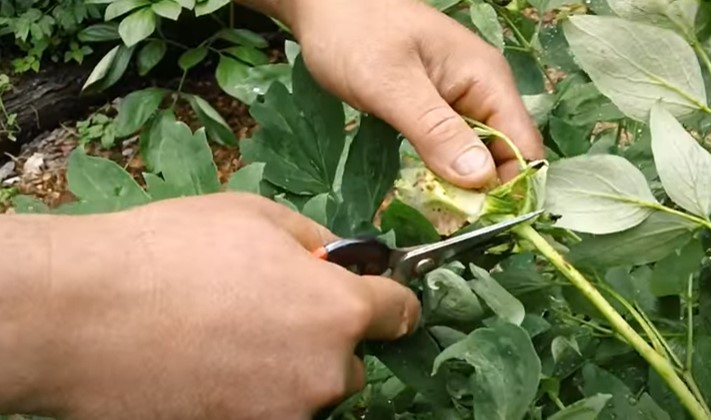
- Check for spent flowers and seed pods developing in your tree peonies. You’ll know that the seed pods are developing when they are starting to swell.
- Cut them right above the first set of leaves and any potential bud growth for the next year. Tree peonies are hardy plants. They may lose all their leaves in winter but they will grow back in the next growing season.
- You should also remove any dead leaves or branches to help your peony conserve its energy in keeping strong roots and foliage.
- Always dip the pruning shears after cutting each flower to remove the unexpected transfer of spores in the plant.
- Collect the dried flowers and seed pods and use them as compost, propagation, or dried flowers.
What To Do With Deadheaded Peony Flowers?
Who says dried flowers are off to the trash?
The dry and spent flowers that you removed from the plant can still be useful. If they are just faded and still fragrant, you may use them as a dried flower ornament in your house.
Here are some ideas on what you can do about them:
Peony Wreath
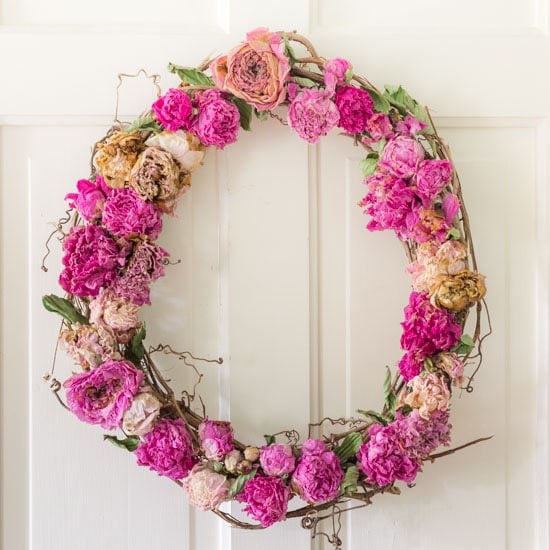
You can dry and remove the moisture off the faded peonies and turn them into a wreath for the holiday seasons. Some people hang them to dry or use silica gel to speed up the drying process.
Scented Dried Flowers On a Vase
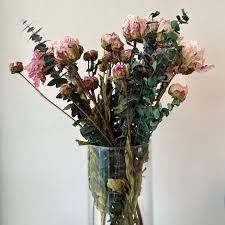
Fragrant dried flowers have become a popular home accent in recent years. You may also do it by drying the deadheaded peonies and mixing them with a fragrant essential oil like chamomile to freshen up your room.
Peony-scented Candle
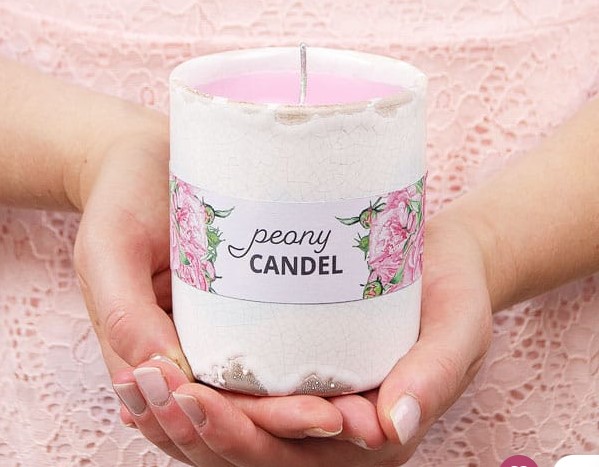
You may also capture the unique scent of peonies by turning them into a scented candle. You can do it at home using simple ingredients.
Here’s a guide on how to do a DIY scented candle at home.
Peony Bath Salts
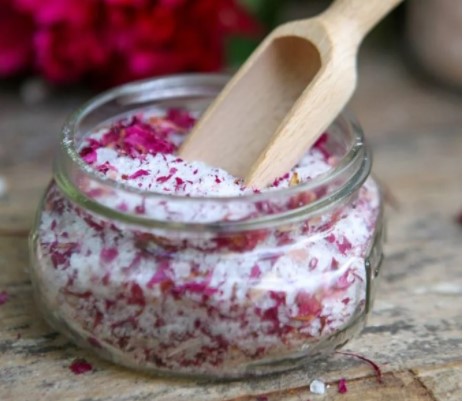
You may also capture the scent of peonies by adding them to your exfoliation routine.
Peonies are used in Chinese medicine for treating ailments on the liver, spleen, and reproductive organs. Use it to detox your body using this guide.
Wedding Confetti
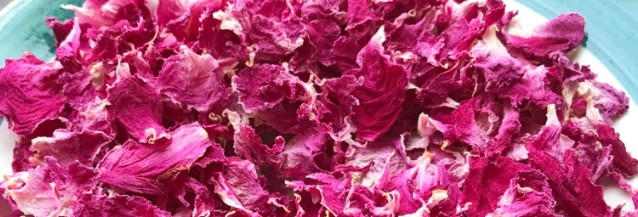
Did you know that dried peony petals can be sold on Etsy?
You can dehydrate the flowers and sell them as a wedding essential. Check out the price range here.
Final Thoughts
Deadheading peonies is an essential plant care routine that you should do to keep them growing healthy for the next spring and prevent them from getting infected with fungal diseases.
We hope that this post has helped you know more about deadheading techniques. If you find this post informative, please share it with your friends.
Let us know in the comments the response of your peonies with the deadheading process. As always, happy gardening!
